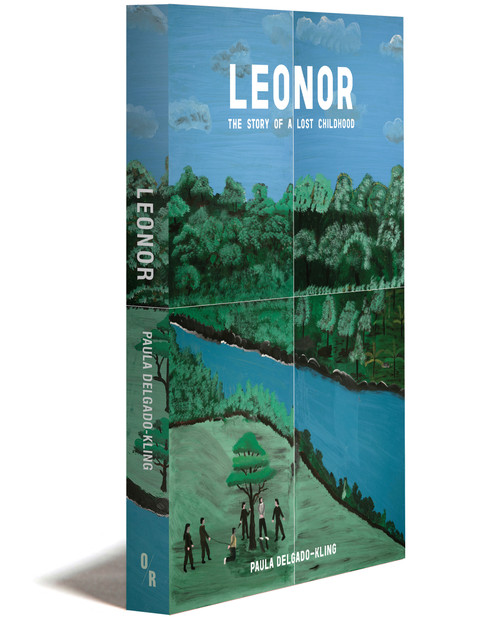A Year Inside MS-13
A description from the belly of the beast that is MS-13: the first book to reveal the inner workings of the most violent gang in the world, written by an anthropologist who was there.
Selected as one of the ten best books of the year by El Diario
about the bookabout
This short, intense book exposes life inside the largest, most violent gang in the world, Mara Salvatrucha 13, more commonly known as MS-13. Right in the heart of El Salvador's capital San Salvador, anthropologist Juan José Martínez d´Aubuisson observes firsthand an escalating cycle of brutality between MS-13 and its sworn enemies from Barrio 18 as it becomes a war fought on a professional scale with grenades and machine guns.
For the better part of a year, d´Aubuisson was embedded in one of the cells of MS-13, where he learned its moral codes, rules, legends, and contradictions. His journey into the heart of the gang is guided by an enigmatic character, Destino, a veteran leader of MS-13. After many conversations with Destino, a strange kind of friendship emerges between the two, and the anthropologist understands not only the origin of the gang and its war with Barrio 18 but the deep-seated reasons for the regional violence. The book culminates in one of the most violent acts ever in an area that has seen more than its share: a full-scale attack on a public bus with thirty-two passengers on board. Fourteen people were killed and twenty-eight wounded.
Almost all the principal characters in this book end up dying: some are killed in the war, while others fall to the state security forces. Those that do escape the war are imprisoned, exiled or murdered by their own gang. This is a true testimony of life inside a wild gang, in a neighborhood governed by abandoned boys.
About The Author / Editor
Preview
This probably isn't the best day to start my research. It's the 18th. A bad omen for MS-13. On this day, Barrio 18 tends to avenge its dead—those killed by MS just five days before, on the 13th. The air is tense.
As we approach the last neighborhood on the hill, our escort watches us like a hawk. He leaves us in the care of another pair of eyes that repeat the process.
"A little faster if you can, brother".
It is Marcos, riding in tandem on the cheap Chinese motorcycle that serves as our transportation. I push the motor until it is spewing exhaust, groaning with each pothole. And Marcos repeats, trying to hide his nerves:
"Maybe a little faster, still. Once we're a little higher up we can slow down".
Our surroundings have a rural air. Bucolic, really. Dirt roads, and brick houses with fiber cement for roofing. You can still see hints of the cardboard shacks they once were. If not for the graffiti, it would look like an average neighborhood on the fringe of some city. The rainy season has yet to arrive, but every so often we come across pools of stagnant water. Pools that in winter become a rushing river, threatening to sweep up any living thing in the area.
"This isn't even the worst of it. Around there is where they'd toss the bodies," reports Marcos, livening our ascent up the hill. He is a young man, some nineteen years old. He has lived here all his life. His brother was a member of Mara Salvatrucha and he knows these roads like the palm of his hand. He now guides me through this hell like Dante's Virgil, and I, clumsy and scared, follow his instructions to a T. If he tells me not to look in some direction, I don't; if he tells me to speed up, I do so without asking questions.
"Slow down now, we're in the Salvatrucha zone", he says, and by his tone I gather that this is supposed to be reassuring.
Block by block, the walls start to show MS-13 graffiti painted in black or blue. As we draw closer, the signs, walls, and sidewalks announce to us that the brothers of MS-13 live here.
We reach our destination, the last neighborhood on the hill. We are greeted by a large gang mural, guarded over by a handful of young men who, upon seeing us, stand defiantly. Marcos greets them. They look us over and return to their posts without greeting us back. Like old hens, they watch over their roost.
in the media
A Year Inside MS-13
A description from the belly of the beast that is MS-13: the first book to reveal the inner workings of the most violent gang in the world, written by an anthropologist who was there.
Selected as one of the ten best books of the year by El Diario
about the bookabout
This short, intense book exposes life inside the largest, most violent gang in the world, Mara Salvatrucha 13, more commonly known as MS-13. Right in the heart of El Salvador's capital San Salvador, anthropologist Juan José Martínez d´Aubuisson observes firsthand an escalating cycle of brutality between MS-13 and its sworn enemies from Barrio 18 as it becomes a war fought on a professional scale with grenades and machine guns.
For the better part of a year, d´Aubuisson was embedded in one of the cells of MS-13, where he learned its moral codes, rules, legends, and contradictions. His journey into the heart of the gang is guided by an enigmatic character, Destino, a veteran leader of MS-13. After many conversations with Destino, a strange kind of friendship emerges between the two, and the anthropologist understands not only the origin of the gang and its war with Barrio 18 but the deep-seated reasons for the regional violence. The book culminates in one of the most violent acts ever in an area that has seen more than its share: a full-scale attack on a public bus with thirty-two passengers on board. Fourteen people were killed and twenty-eight wounded.
Almost all the principal characters in this book end up dying: some are killed in the war, while others fall to the state security forces. Those that do escape the war are imprisoned, exiled or murdered by their own gang. This is a true testimony of life inside a wild gang, in a neighborhood governed by abandoned boys.
About The Author / Editor
Preview
This probably isn't the best day to start my research. It's the 18th. A bad omen for MS-13. On this day, Barrio 18 tends to avenge its dead—those killed by MS just five days before, on the 13th. The air is tense.
As we approach the last neighborhood on the hill, our escort watches us like a hawk. He leaves us in the care of another pair of eyes that repeat the process.
"A little faster if you can, brother".
It is Marcos, riding in tandem on the cheap Chinese motorcycle that serves as our transportation. I push the motor until it is spewing exhaust, groaning with each pothole. And Marcos repeats, trying to hide his nerves:
"Maybe a little faster, still. Once we're a little higher up we can slow down".
Our surroundings have a rural air. Bucolic, really. Dirt roads, and brick houses with fiber cement for roofing. You can still see hints of the cardboard shacks they once were. If not for the graffiti, it would look like an average neighborhood on the fringe of some city. The rainy season has yet to arrive, but every so often we come across pools of stagnant water. Pools that in winter become a rushing river, threatening to sweep up any living thing in the area.
"This isn't even the worst of it. Around there is where they'd toss the bodies," reports Marcos, livening our ascent up the hill. He is a young man, some nineteen years old. He has lived here all his life. His brother was a member of Mara Salvatrucha and he knows these roads like the palm of his hand. He now guides me through this hell like Dante's Virgil, and I, clumsy and scared, follow his instructions to a T. If he tells me not to look in some direction, I don't; if he tells me to speed up, I do so without asking questions.
"Slow down now, we're in the Salvatrucha zone", he says, and by his tone I gather that this is supposed to be reassuring.
Block by block, the walls start to show MS-13 graffiti painted in black or blue. As we draw closer, the signs, walls, and sidewalks announce to us that the brothers of MS-13 live here.
We reach our destination, the last neighborhood on the hill. We are greeted by a large gang mural, guarded over by a handful of young men who, upon seeing us, stand defiantly. Marcos greets them. They look us over and return to their posts without greeting us back. Like old hens, they watch over their roost.








